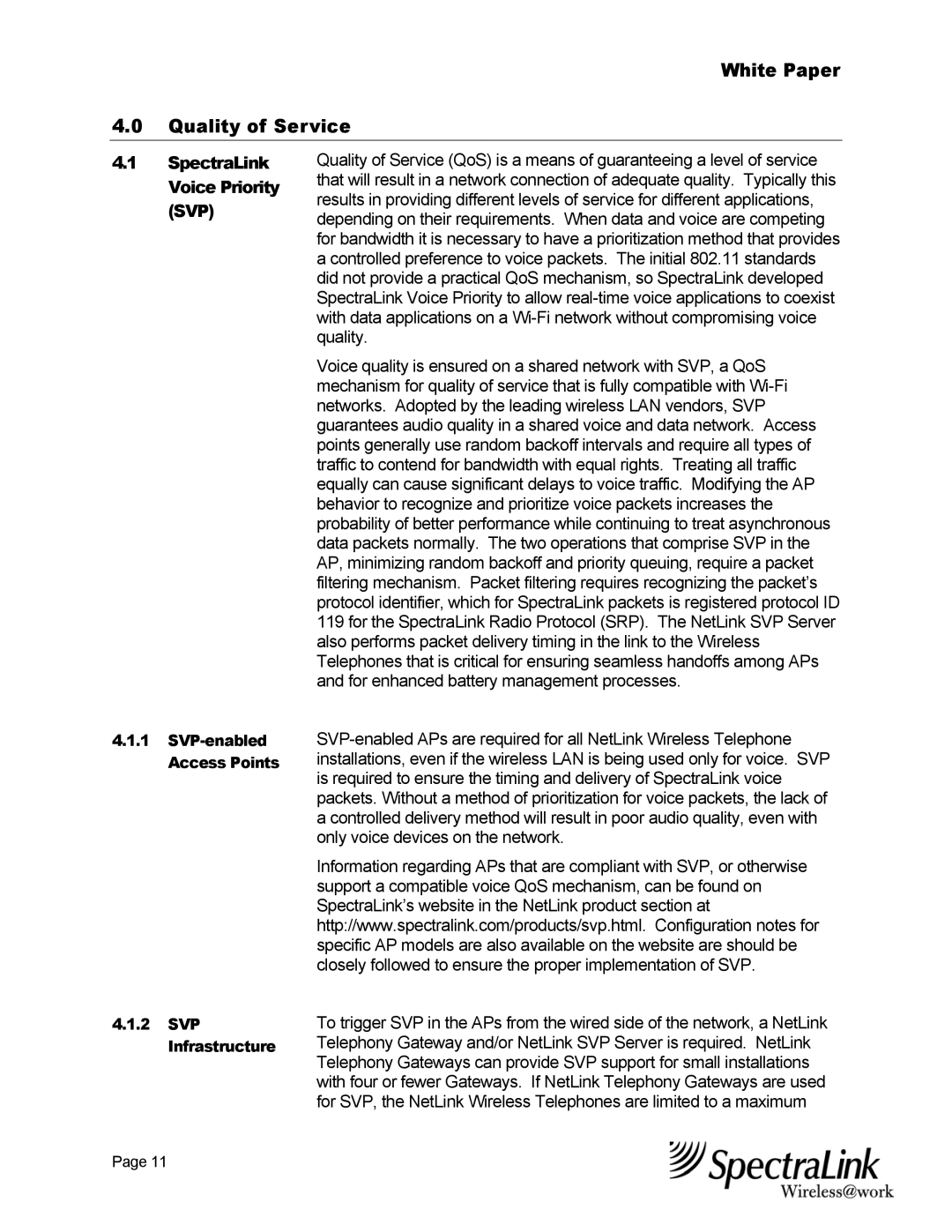
White Paper
4.0 Quality of Service
4.1SpectraLink Voice Priority (SVP)
4.1.1
4.1.2SVP Infrastructure
Quality of Service (QoS) is a means of guaranteeing a level of service that will result in a network connection of adequate quality. Typically this results in providing different levels of service for different applications, depending on their requirements. When data and voice are competing for bandwidth it is necessary to have a prioritization method that provides a controlled preference to voice packets. The initial 802.11 standards did not provide a practical QoS mechanism, so SpectraLink developed SpectraLink Voice Priority to allow
Voice quality is ensured on a shared network with SVP, a QoS mechanism for quality of service that is fully compatible with
Information regarding APs that are compliant with SVP, or otherwise support a compatible voice QoS mechanism, can be found on SpectraLink’s website in the NetLink product section at http://www.spectralink.com/products/svp.html. Configuration notes for specific AP models are also available on the website are should be closely followed to ensure the proper implementation of SVP.
To trigger SVP in the APs from the wired side of the network, a NetLink Telephony Gateway and/or NetLink SVP Server is required. NetLink Telephony Gateways can provide SVP support for small installations with four or fewer Gateways. If NetLink Telephony Gateways are used for SVP, the NetLink Wireless Telephones are limited to a maximum
Page 11
